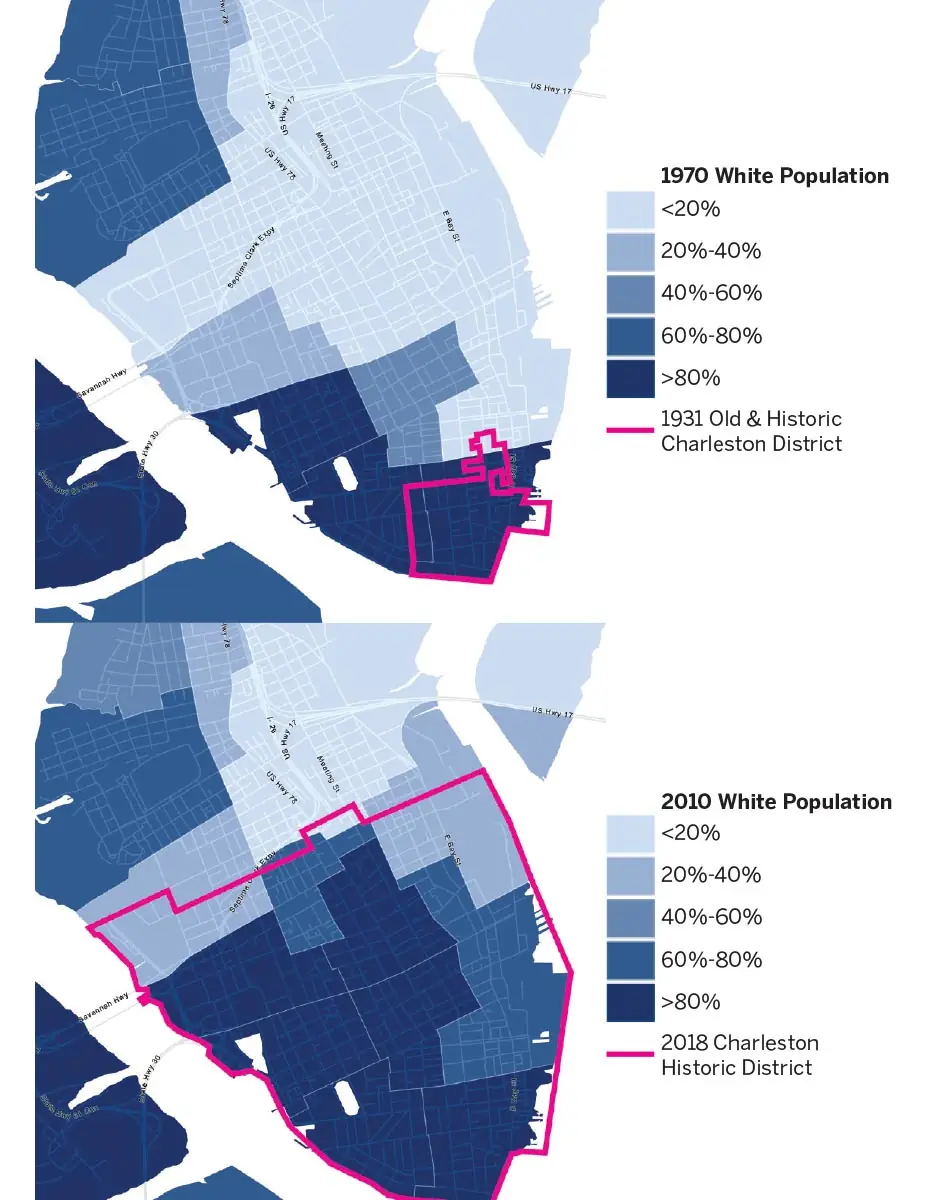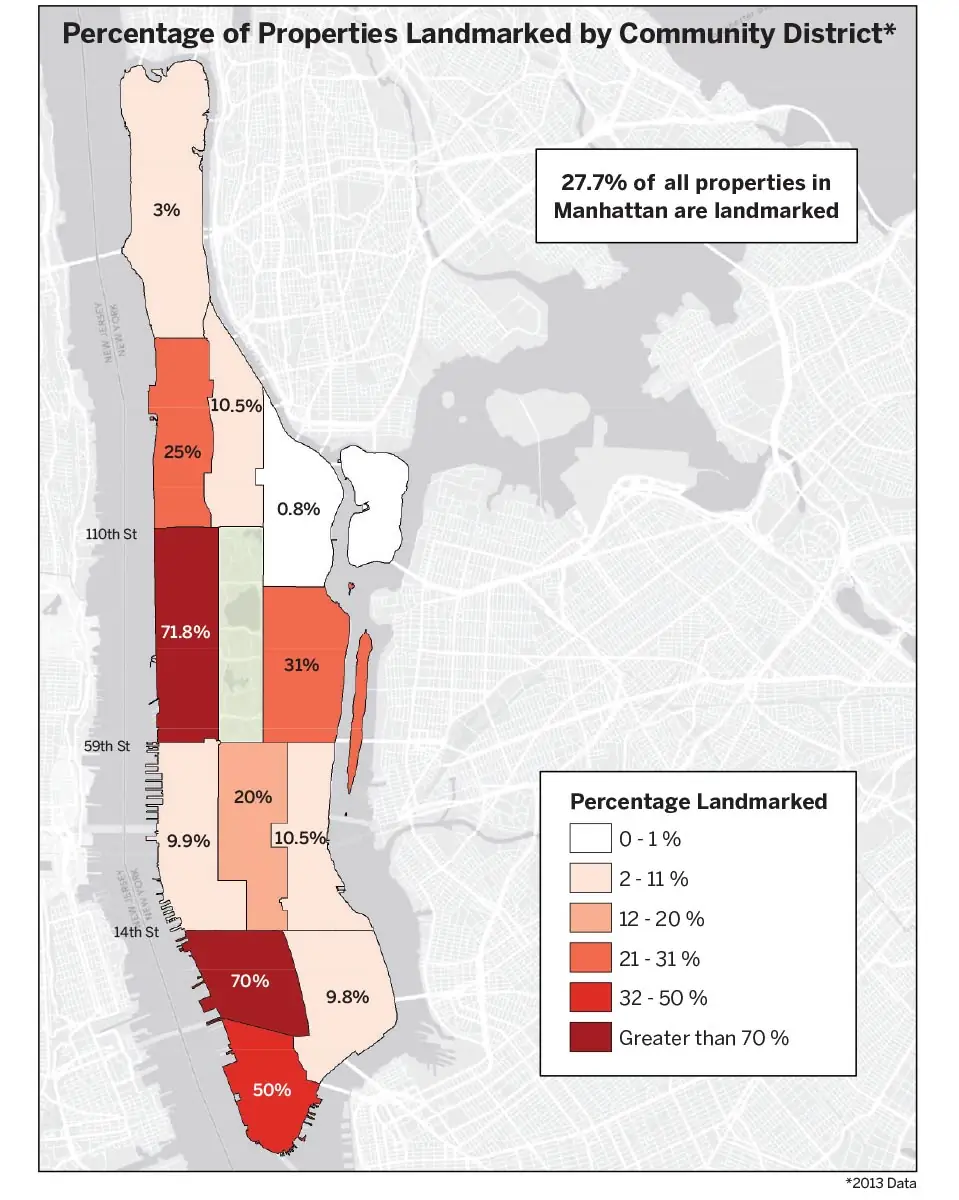When Rem Koolhaas warned at the 2010 Venice Biennale that “preservation is overtaking us,” he raised issues critical to design. In a world struggling with climate change, social inequity, and the changing dynamics of modern urbanism, what are the consequences of turning over the future to the past-centered ideology of preservation? Koolhaas brought to the fore the irony of preservation as an invention of modernity, but he missed the even more insidious way in which preservation concentrates power in the hands of elite subgroups that weaponize history to serve their own ends. And among the different legal and governmental forms that this takes, it is the practice of designating local historic districts—areas where existing buildings are subject to exacting standards of upkeep, and new construction is tightly curtailed—that has the most severe of consequences. The National Historic Preservation Act of 1966 led to legislation in states across the country that enabled the creation of the more than 2,300 historic districts in existence today, the most critical of which shape the cores of major cities.
A bit of historical background is helpful. Preservation’s origins lie in Great Britain’s Ancient Monuments Protection Act of 1882. It reified the power of the sovereign over all his kingdom, protecting the wealth expressed in inherited estates while excluding the buildings of nouveau riche industrialists who were invading “proper society.” Preservation was about power, maintaining the authority of a hierarchical society. Identity of place belonged to the elite.
The United States Constitution gave citizens authority over their own property; in the next century, Ralph Waldo Emerson proclaimed the U.S. free of the past as the “country of the future” and Henry David Thoreau compared Britain to “an old gentleman who is traveling with a great deal of baggage . . . which he has not the courage to burn.” But, by the late 19th century, xenophobic backlash against immigrants from around the world and the northward movement of African-Americans led to racist and classist zoning policies that restricted ownership and access for many. Later, federally sponsored real-estate maps directed bank loans to perpetuate spatial patterns that separated whites from Blacks, Asians, and southern and eastern Europeans, who were deemed to be lesser; homeowners from renters; and single-family dwellings from multifamily units. When the Supreme Court outlawed race as a basis for zoning, in 1917, planners had to look to other, less overt tools to achieve the same effect. Historical-district regulation provided an answer.
The scholar Christopher Silver finds the racial origins of historic districting in Pittsburgh engineer Morris Knowles’s 1931 zoning code for Charleston, South Carolina. The “Old and Historic Charleston District” covered the core of the antebellum city, centering the identity of “Old Charleston” on the American Revolution and the antebellum past and thereby avoiding issues of slavery, the Civil War, and Charleston’s subsequent decline. The impact of the United States’ first preservation district reached beyond the preserved architectural fabric, gardens, and selective narratives of a golden age. Under its regulations, “others” and their homes were removed. In 1930, the population of old Charleston was racially balanced. Ten years later, the effects of Charleston’s new historic code were obvious in changing demographics. Northern expansion of the historic district has continued since—forcing the African-American population out of the city’s entire lower peninsula. By 1950, the area of the original district south of Broad Street was 99 percent white.

As the Charleston Historic District expanded, the population of the lower peninsula became increasingly white. Image © Socialexplorer Inc. / CivicVisions

The percentage of historically landmarked properties has reached over 50 percent in parts of Manhattan. Image courtesy mappluto / REBNY
Click maps to enlarge.
After the Second World War, as the Great Migration continued, northern cities too began to adopt historic districts. Philadelphia planner Ed Bacon created the Society Hill district in a low-income, demographically diverse area of aging buildings around Independence Hall. Onerous preservation standards that required a return to original materials along with upgrades to meet modern building codes, all within two years, added costs that forced many longtime owners to sell. In the decades after 1950, Society Hill was transformed from a mixed-income neighborhood that was 80 percent white and 20 percent Black to an elite community that was 95 percent white. Contrary to early 19th-century promises of democracy, preservation regulations granted a tiny minority of Americans the power to create places mirroring their desired identity. Preservation’s origins are in segregation.
The late historian David Lowenthal’s abbreviated distinction “history is for all; heritage is for us alone” explains the narratives behind historic districts. When evaluating these districts, we should ask: Whose history is being told? Who benefits from this history? Who is excluded or included? Koolhaas noted how preservation creates an acceptable version of the past by preserving architecture to aestheticize life according to controlling taste. Like Charleston, Philadelphia constructed an essentialist identity of Society Hill’s past. Both districts are characterized by sanitized, aestheticized urban fabrics displaying the hallmarks of elite Anglo Saxon–derived taste culture. Not coincidently, they also act as exclusionary devices to keep “others” out.
A closer look at historic districts reveals that preservation comes at the expense of social, cultural, economic, and political diversity—and opportunity. The late geographer Doreen Massey describes as “place-bound” those locales where the past is seen to embody the “real” character of a spot unspoiled by outside “intrusions.” To Massey, progressive places are processes, ever-changing and not static. Thus tradition, seen as a form of nostalgia, prevents change and ignores the reality that thriving areas are constantly in flux, building new traditions and connections to the wider world. In historic districts, a limited past determines the present (and future) by resisting change. Progressive places are not bounded; they are porous, accepting new people and material change. Singular place identities are a sign that one group is in control.
By making identity of place static, preservation provides the certainty that real estate forces value. Owners and cities may benefit financially, but at what cost? In the case of Manhattan, nearly half of the west side of the island from Central Park to the Battery is now covered by historic districts, as is three-quarters of the most valuable real estate in Center City Philadelphia. Change is possible only on the edges. In a 2014 report, the Real Estate Board of New York evaluated the impacts of locally designated historic districts in New York, finding that the population of those districts is less diverse in racial and ethnic makeup than the rest of Manhattan, Brooklyn, or the city as a whole. Of the 156 districts in all five boroughs of New York, more than half are in Manhattan, creating a type of “cultural gerrymandering” that preserves investment for owners in homogeneous enclaves, raises real-estate prices, and may even promote tourism. And yet, despite the density of transit beneath their streets, landmarked New York districts have lower population densities, lower percentages of rental units, and smaller households than other areas. The consequence is the retention of aging and energy-inefficient building stock with a limited number of housing units, undermining the creation of density near transit that would reduce the city’s carbon footprint.
Beyond the issues of whose identity, whose history, and whose taste cultures are represented in bounded historic enclaves, the most urgent issue is the impact preservation has on residents’ futures. Raj Chetty, a professor of economics at Harvard, has shown how, despite money spent on affordable housing, poverty remains concentrated in disinvested neighborhoods. Children growing up in these neighborhoods have a lower income potential and fewer prospects of escaping poverty. Chetty’s research illustrates that enabling children to grow up in successful places matters: “the impact is greatest on those who move young and grow up entirely in a high-opportunity neighborhood,” he writes. Historic districts have the resources to be high-opportunity neighborhoods but instead perform like gated communities, controlling aesthetics and limiting new construction that could add density and new housing types. They become a tool that commodifies history, creating transactional value for a privileged few in today’s wealth-focused world. Chetty’s research makes it clear that, in a society that permits itself to be shaped by the economic bottom line alone, the ability to exclude changes life outcomes. Preservation is a form of social injustice that fails the test of future lives.





Post a comment to this article
Report Abusive Comment